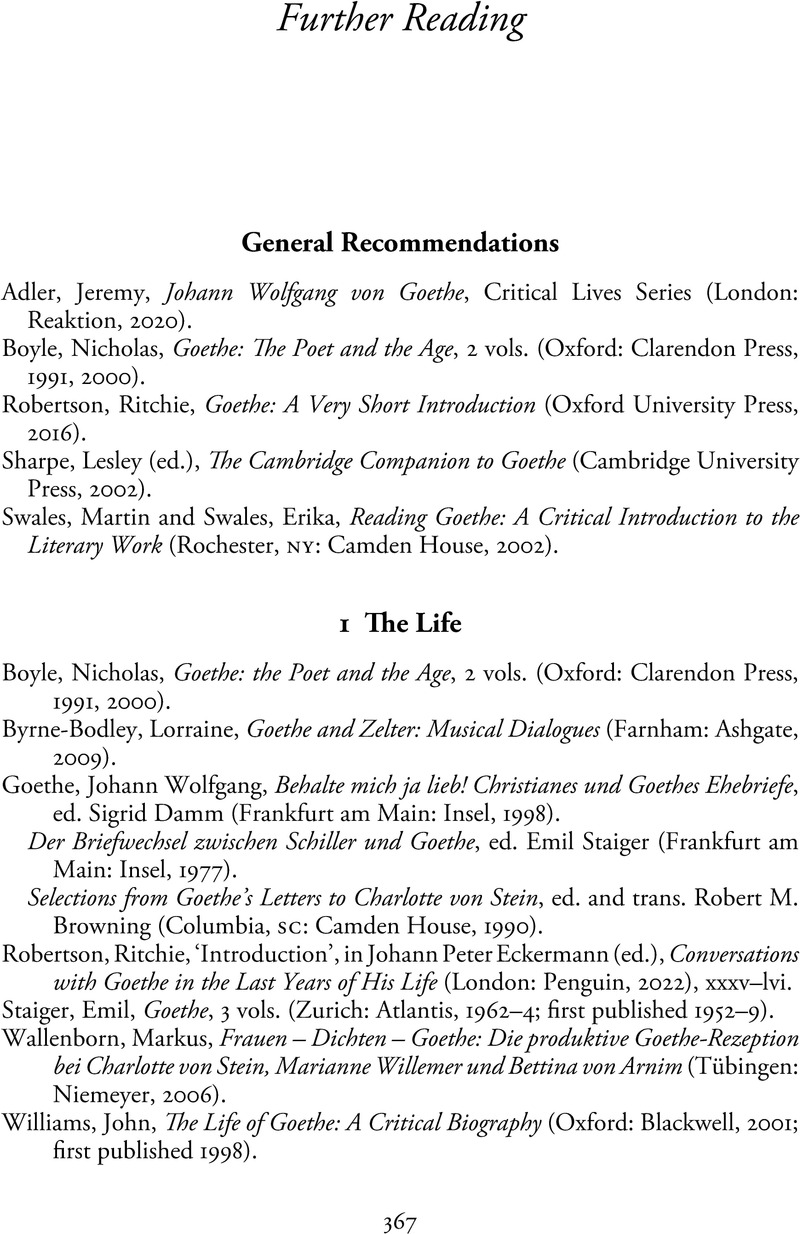Book contents
- Goethe in Context
- Goethe in Context
- Copyright page
- Contents
- Illustrations
- Notes on Contributors
- Acknowledgements
- Note on Translations and List of Abbreviations
- Chronology
- Introduction
- Part I Life and Times
- Part II Literature
- Part III Art
- Part IV Philosophy and Science
- Part V World Cultures Inspiration and Reception
- Part VI Goethe’s Lasting Significance
- Further Reading
- Index
- References
Further Reading
Published online by Cambridge University Press: 16 May 2024
- Goethe in Context
- Goethe in Context
- Copyright page
- Contents
- Illustrations
- Notes on Contributors
- Acknowledgements
- Note on Translations and List of Abbreviations
- Chronology
- Introduction
- Part I Life and Times
- Part II Literature
- Part III Art
- Part IV Philosophy and Science
- Part V World Cultures Inspiration and Reception
- Part VI Goethe’s Lasting Significance
- Further Reading
- Index
- References
Summary

- Type
- Chapter
- Information
- Goethe in Context , pp. 367 - 381Publisher: Cambridge University PressPrint publication year: 2024



